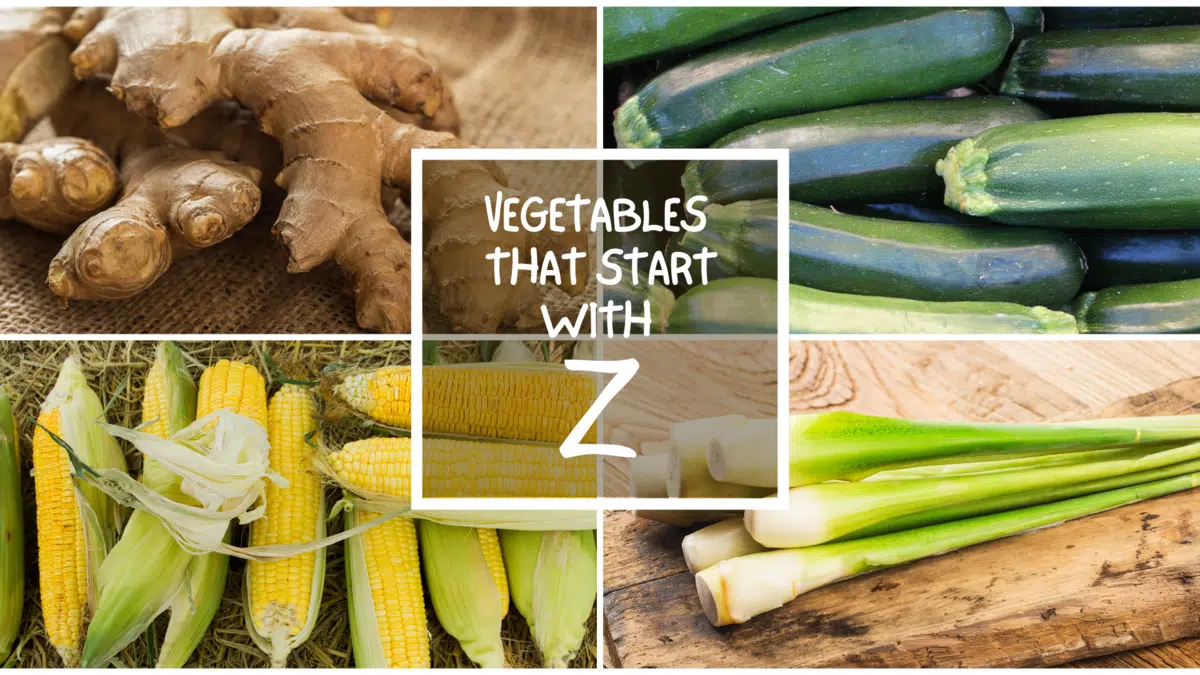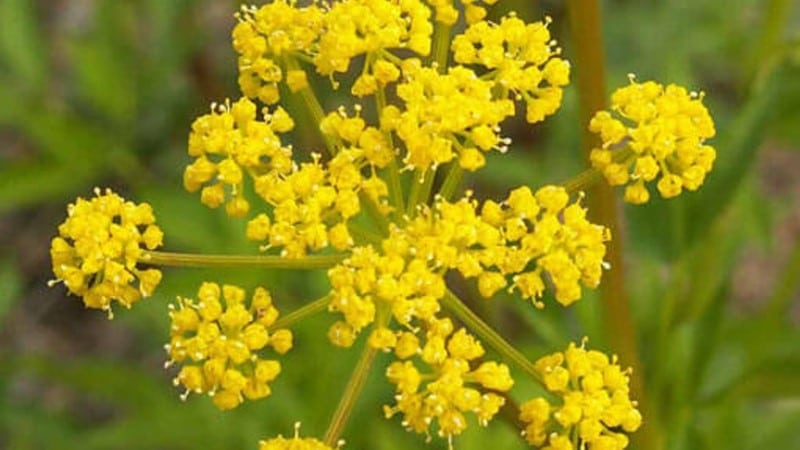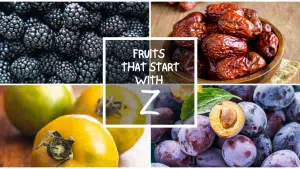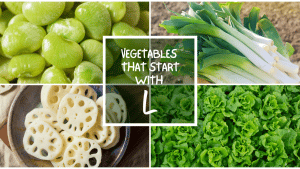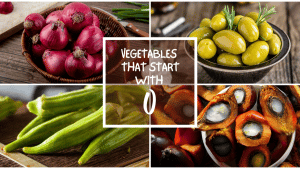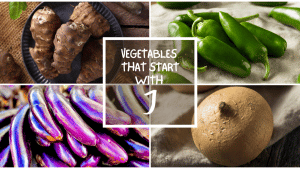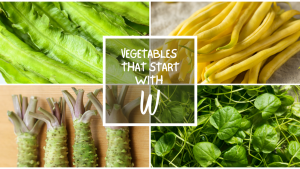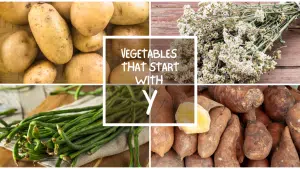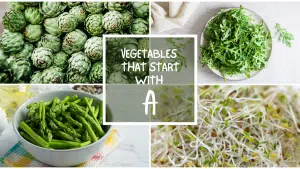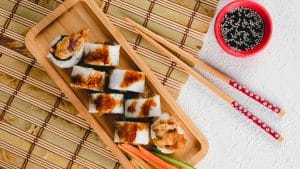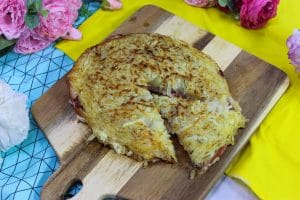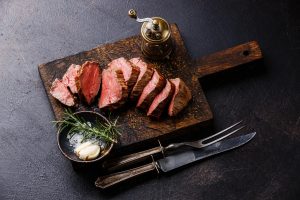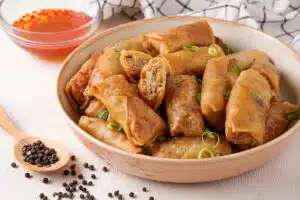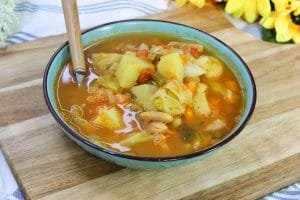All The Vegetables That Start With Z
Important Note: When you buy through our links, we may earn a commission. As an Amazon Associate we earn from qualifying purchases. Content, pricing, offers and availability are subject to change at any time - more info.
Vegetables are world-renowned for providing the body with essential nutrients for its day-to-day functionality. It has proved hard for humans to have vegetables in every meal due to the limited options. But vegetables are the most diverse foodstuffs available to humans; all you have to do is research what other kinds of vegetables are available to you apart from the ones you already know. You can create a list of all the vegetables you know of based on their characteristics, shapes, color, nutritional contents, or by the first letter in their name. If you choose to list vegetables depending on the first letter of their name, here is a list of all the vegetables that start with Z.
Zucchini
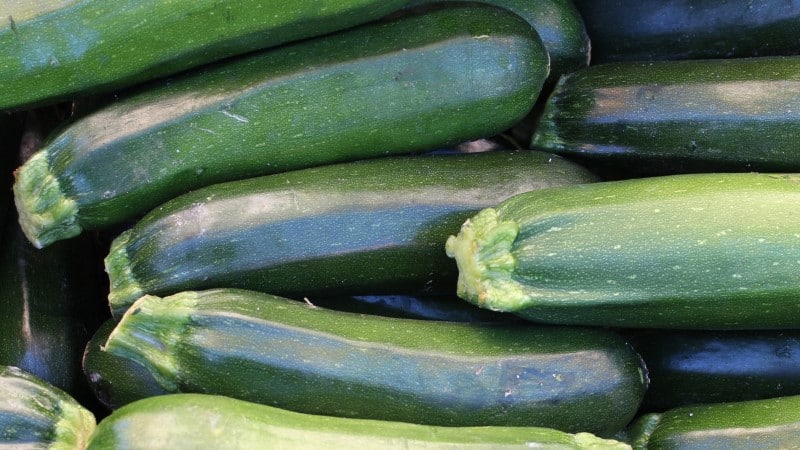
Zucchini is scientifically known as Cucurbita pepo; it is an herbaceous vining plant mainly cultivated for its fruit. The zucchini fruit is primarily harvested when it is still young and immature since it is at that stage that it is edible. The origins of zucchini can be traced back to the 19th century in the northern regions of Italy. The zucchini plant happens to do very well in areas with a temperate climate. The plant heavily relies on insects for pollination, so if cultivated in areas with high pesticide use, there will be a pollinator decline, hence hand pollination can be used. Ordinary zucchini fruits are usually green though the golden variety is predominantly yellow or orange. Zucchini happens to be heavily cultivated in Europe and Asia, with China, India, and Mexico being the leading producers and exporters worldwide.
Like other members of the squash, zucchini contains cucurbitacins, a toxic chemical compound that gives the zucchini its bitter aftertaste and is also known to cause severe gastroenteric upsets. The causes of high levels of toxins are cross-pollination with ornamental squashed or stressful growing conditions. It is best to harvest zucchini when they are still attached to the flowers since it is a sign that they are still immature; thus, they are ready for harvesting. The edible parts of the zucchini plant are the fruit and the flowers. The fruit is edible raw or when cooked as a vegetable. Zucchini is primarily eaten by itself or as a side dish. There are different ways of cooking zucchini; you can serve them steamed, grilled, boiled, baked, fried, barbecued, stuffed, or incorporated into other dishes like souffle. If you choose to sever zucchini raw, you could do so by shredding or slicing it into a salad.
Zucchini is very popular in most cuisines. In the United States, zucchini is fried and served as zucchini fries. In France, it is a key ingredient in the preparation of ratatouille, a stew consisting of vegetables and summer vegetable fruits cooked in olive oil and over low heat for an extended period of time. Also, it can be served stuffed with fruits and meat in a dish popularly known as courgette farcie. In Russia, Ukraine, and other Siberian countries, zucchini is coated in semolina or flour, then fried in vegetable oil and served with sour cream. During the fasting period in Greece, the vegetable is stewed, fried, or boiled with other vegetables, most preferably eggplants and green chili peppers, and served as a main dish or hors d’œuvre.
Zucchini is a rich source of nutrients such as dietary fiber, vitamin A, folate, minerals like potassium, iron, magnesium, manganese, sodium, zinc, phosphorus, and antioxidants like lutein, quercetin, and zeaxanthin. These nutritional contents offer the body various health benefits like improved eyesight, prevention, and management of diabetes, cancer prevention, healthy digestion, reducing blood sugar levels, improving heart health, strengthening the bones, and reducing the risk of prostatic hyperplasia. Zucchini can be found in almost all grocery stores across the United States.
Zea Mays
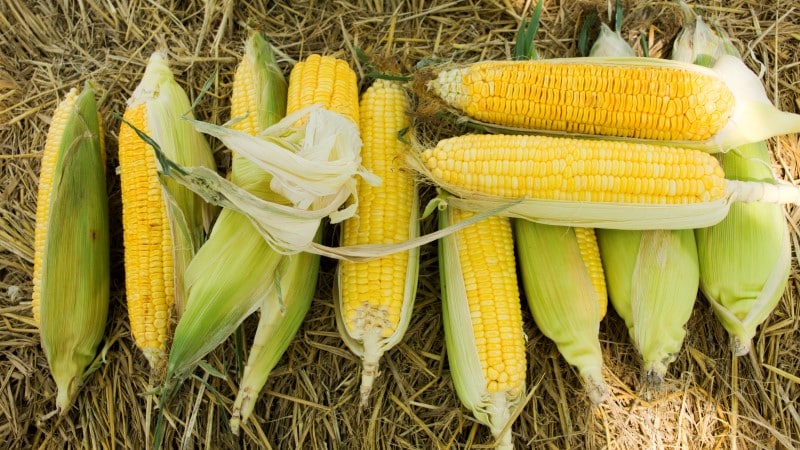
Zea mays is the scientific name for the plant popularly known as maize in most countries, but in North America and Australia, Zea mays is known as corn. Other names used in reference to Zea mays include mielie in the southern regions of Africa, which is derived from the Portuguese word milho, which stands for maize. The Zea mays plant is native to the regions of Central America, where it is believed to have first been domesticated in Mexico about 10000 years ago. The spread of maize to other areas of the world can be attributed to the trade conducted between the central American natives and the Spanish explorers. Maize is a very popular crop worldwide since it is a staple food source for more than half the countries in the world. Its cultivation surpasses that of wheat and rice, with countries like the United States, Brazil, South Africa, China, Argentina, Ukraine, Russia, and Indonesia being some of the world’s leading maize producers.
The Zea mays plant can grow to a height of about 3 meters though some varieties can grow to 13 meters tall. The stem of the Zea mays plant consists of about 15 internodes, with the leaves arising from the nodes on the opposite sides in an alternating pattern. At the top end of the stem is a tassel that consists of the male flower. The female parts of the Zea mays plant are usually enclosed by several leaves, commonly referred to as husks. Usually, the female parts are always lower than their male counterparts to make it easier for them to be pollinated since the Zea mays plant relies on the wind as the main pollination agent. Much research has been conducted on the corn plant to improve the quality, yield, tolerance to extreme conditions, and speed up the growth rate, thus resulting in several varieties of the Zea mays plant. These varieties include dent corn, pod corn, sweet corn, flour corn, field corn, popcorn, and flint corn. Each of these varieties of corn is grown for a specific goal, like flour corn is grown for flour production, and popcorn is grown for the making of a popular snack with the same name. Field corn is used for animal feed, flint corn is mainly grown for decorative purposes, and sweet corn is used as a vegetable.
There are various ways Zea mays can be prepared for human consumption since it is mostly prefeed when cooked. You can choose to boil, grill, roast, or steam; this is mostly preferred with the kernels still on the cob. Another way Zea mays can be consumed is by grinding the seeds into flour that can be used to prepare various meals like ugali in Kenya and most East African countries. The maize flour can be used in baking baked goods like cornbread, but it’s not preferred since it lacks the protein that gives wheat its rising properties.
Here are some simple recipes involving Zea mays; sweet corn curry, roasted maize on a cob, porridge made from maize flour, or corn cheese toast. Maize is a staple food in most cuisines worldwide. In Mexico, the cornmeal obtained from the ground up zea mays kernel is treated with limewater. The mixture is used to prepare atole, tortillas, enchiladas, tacos quesadillas, chilaquiles, tostadas, and other dishes. Also, in Mexican cuisines, the fungus of the corn plant is a popular delicacy. The porridge made from the coarse maize meal is very popular in most countries. Each country has a different name for it, like angu in Brazil, polenta in Italy, mămăligă in Romania, or Uji wa mahindi in East African countries. Sweet corn is popular in the United States, Britain, Canada, Cyprus, the Balkans, and some parts of South America, where it is consumed as corn on the cob due to its high levels of sugars and low starch. Corn is also consumed as a snack in the form of popcorn, churros, or hot dogs, which are mostly hawked on the streets of major cities worldwide.
Zea mays boast of a rather impressive nutritional profile consisting of various nutrients like dietary fiber, starch, folate, and vitamins B, C, E, and K. It also contains various minerals and antioxidants such as lutein, zeaxanthin, magnesium, potassium, iron, zinc manganese and phosphorus. This nutritional composition offers the body various health benefits like improved eyesight, healthy bones, protection from muscle degradation and age-related complications, regulation of the blood pressure and sugar levels, treating anemia, improving brain function and heart health, boosting the immune system, protecting the body’s cells from the damaging free radicals and promoting a healthy pregnancy.
There are other benefits of Zea mays, such as the kernel being used to produce corn oil. The Zea mays stalks can be used as manure and animal feed. The starch obtained from the Zea mays kernel is a major ingredient in the production of fabrics, plastics, adhesives, and other chemical products. The Chrysanthemin compound found in purple corn can be used as a food coloring agent. Also, Zea mays is an excellent source of biomass fuel.
Zingiber Officinale
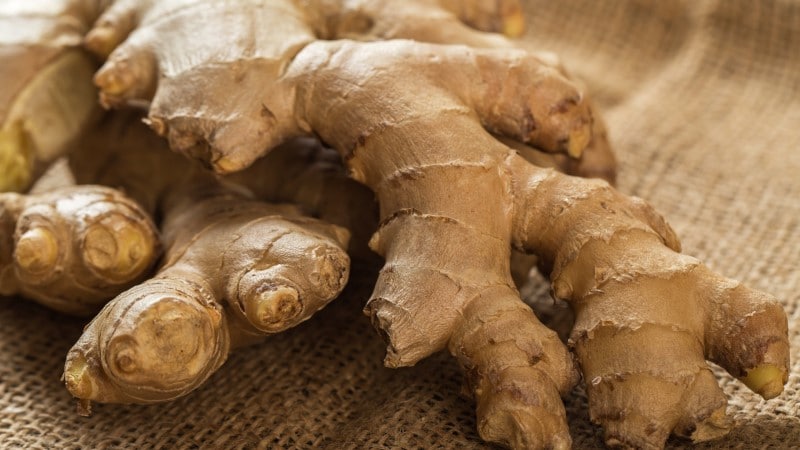
Zingiber officinale is a flowering plant that is mainly cultivated for its roots. Zingiber officinale is popularly known as ginger or ginger root. Ginger is an herbaceous perennial plant with annual pseudo stems that can grow to about one meter. The Zingiber officinale plant produces yellow and pale flowers with purple edges. The leaves have rolled bases that make up the stem and are usually green. Zingiber officinale is believed to have originated from Southeast Asia, where it spread to the rest of the world through trade between the Greeks and Romans. The ginger root is listed as one of the world’s healthiest spices, hence its popularity. Cultivation of Zingiber officinale is done in almost every region of the world, but the world’s leading producers include India, Nepal, China, Nigeria, Thailand, and Indonesia.
Zingiber officinale is mostly cultivated for its roots (rhizome). The ginger roots are harvested when the stalk begins to wither since it is at that moment that the rhizomes are believed to have reached maturity. After the rhizomes have been harvested, they are scraped and washed to kill them, thus preventing them from sprouting. Ginger happens to have a spicy-sweet taste and a pungent smell, making it a much-desired commodity apart from its medicinal properties. Zingiber officinale can be eaten either raw or cooked as an ingredient. Ginger can be found in various forms, such as its natural state or powdered form. However, in powdered form, Zingiber officinale taste is usually mild compared to its natural form.
Various food items use ginger root as an ingredient; these include alcoholic beverages, vegetables, pickles, soda, and sweets. Zingiber officinale can be pickled in sherry or vinegar and consumed as a snack or food ingredient. Ginger root can be steeped in hot water and used to make an herbal tea often mixed with honey. The tea is believed to cure sore throats and runny noses. Mature Zingiber officinale rhizomes can be blended to create ginger juice, a key ingredient in most Vietnamese, Japanese, Chinese, Korean, and Indian cuisines, especially in flavoring vegetarian dishes, meat, and seafood. Ginger is sometimes ground to make ginger powder. The ginger powder is used to make pastries like cookies, cakes, crackers, and gingerbread. Also, ginger powder is a key ingredient in ginger beer and ginger ale. In the United Kingdom, the rhizomes are cooked in sugar until it becomes soft, making crystallized ginger popularly known as stem ginger.
Ginger root offers the body various benefits like fighting germs and getting rid of gasses forming in the stomach, thus calming nausea, especially during pregnancy and in patients undergoing chemotherapy. Other benefits include improved oral health, soothing sore muscles, treating symptoms of osteoarthritis and arthritis, easing of menstrual pains in women, slowing down the advancement of cancerous cells in the body, and lowering the sugar levels and blood pressure. All these benefits are brought about with the presence of vitamins E, C, B1, B3, B6, and B9 and minerals like calcium, manganese, magnesium, zinc, potassium, and iron. The root of the Zingiber officinale plant also has antioxidants that help reduce oxidative stress that is brought about by the excess number of free radicals in the body. Zingiber officinale can be found in almost all grocery stores or supermarkets across the United States.
Zizania Latifolia
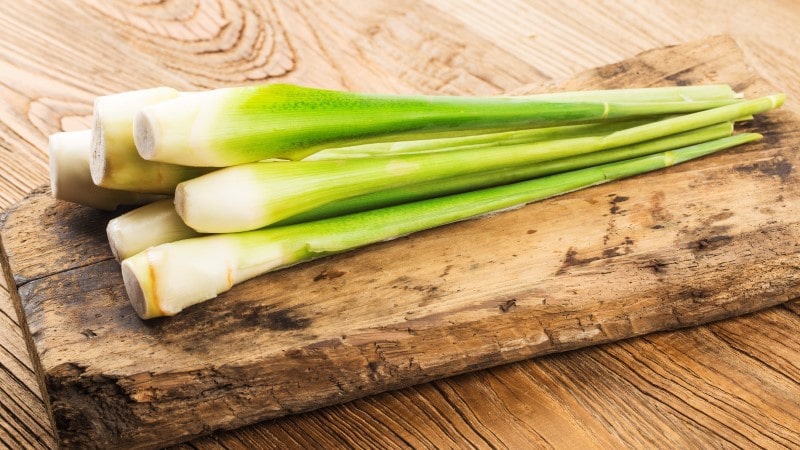
Zizania latifolia is popularly known as Manchurian wild rice. The Zizania latifolia plant is the only member of the zizania genus native to Asia. Zizania latifolia is an annual, perennial aquatic plant that can grow to a height of about 1 to 3 meters. The plant does well in warm tropical and temperate climatic conditions. It mostly grows in swampy areas with slightly acidic loam-clay soils with a P.H range of 4.5 to 7. Zizania latifolia is primarily cultivated as a food crop in China, while in Britain, it is grown along the sides of lakes as cover for wild fowls.
Zizania latifolia is a popular delicacy in China, and it has a nutty flavor that makes it even more tasty and desirable. The edible parts of the Zizania latifolia plant are the stems, seeds and leaves. The harvesting of the stems and leaves happens when the stem bases are infected with the smut fungus known as Ustilago esculenta. But the harvesting must be done immediately before the fungus starts producing spores since the spores tend to deteriorate the flesh. The most popular method of preparing Zizania latifolia is parboiling the Zizania latifolia and then sautéing them with other vegetables. The seeds of Zizania latifolia can be used as a rice substitute or ground into flour that can be used for baking.
As a vegetable Zizania latifolia is rich in minerals, vitamins, protein, starch, dietary fiber, and various antioxidant phytochemicals while low in fat. These nutrients help the body by boosting the immune system, lowering the risks of chronic diseases, protecting the body cell from damage caused by free radicals, improving the body functions, maintaining and promoting healthy bones, and improving the brain function.
Zizia Aurea
Zizia aurea is an herbaceous perennial flowering plant that belongs to the Apiaceae family. Zizia aurea is the scientific name of golden Zizia. The Zizia aurea plant is native to the eastern regions of the United States and Canada. The plant tends to grow to a height of about 40 to 75 centimeters, with leaves about 8 centimeters wide. The Zizia aurea plant blooms from May to June, and the flowers are predominantly yellow.
The edible part of the Zizia aurea plant is the flowers and the main stem. The flowers and main stem can be chopped and used to garnish most green salads. The flower buds are a delicious vegetable when prepared similarly to broccoli, and they taste even better when paired with fish. The stem can be consumed raw or cooked since it tastes somewhat like celery, but it is more pungent than celery.
Zizia aurea contains nutritional contents like antioxidants, vitamin K, folate, vitamin A, potassium, and vitamin C. These nutritional contents offer the body various health benefits like prevention of scurvy and dropsy, speeding up the body’s healing process, boosting the body’s immunity system, aiding in the treatment of asthma, curing of various stomach problems and increasing the flow of blood to the lower parts of the body.
The Final Letter
All the vegetables listed above are great sources of nutrients your body needs for its nourishment. Before you decide to try them, make sure that you know the correct way of preparing them since some contain toxins that are harmful to humans. Also, remember to consult with your nutritionist on what vegetables are suitable for your consumption without some adverse side effects.
